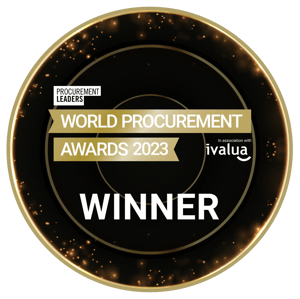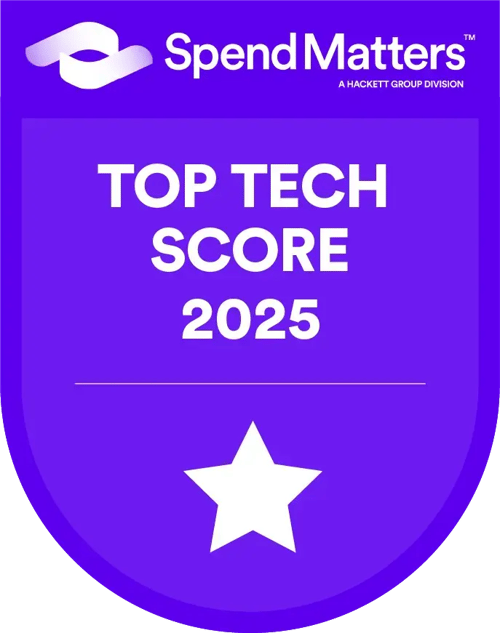Spend under management is the amount of spend managed by procurement out of total company spend.
Improving spend under management helps improve multiple aspects of procurement performance:
-
Execution of category strategies
-
Negotiating better agreements
-
Nurturing preferred supplier relationships
-
Improving compliance through sourcing policies
-
Creating efficient purchase-to-pay (P2P) processes with approval limits
-
Identifying sourcing potential and savings opportunities
Leading enterprises want to follow their spend under management to harness these benefits and avoid the so-called maverick spending.
Maverick spend is spend that does not follow company purchasing policies. Minimizing maverick spend secures better prices and terms and ensures legal and CSR compliance through approved suppliers.
The percentage of spend impacted is a procurement key performance indicator (KPI) used as one of many measures of procurement success.
This blog will highlight the difference between addressable spending and impactable spending and provide actionable tips and best practices for increasing your total spending under management.
Addressable vs. Impactable Spend
Spend under management can be categorized as either addressable or impactable spend. It’s important to note that not all addressable spend is impactable.

What is Addressable Spend?
Addressable spend means the spend that is within the control of the procurement function.
Why can’t all spend be under procurement’s influence? Because not all spend can be influenced due to certain non-negotiable categories, such as:
- Employee salaries
- Expense reimbursements
- Office leases
- Charitable donations
- Accreditation costs
- Taxes
After excluding these non-addressable categories from the total spend, you can identify the potential impactable spend—the portion of spend that procurement can influence and manage strategically.
What is Impactable Spend?
Impactable spend means the spend that is within the domain of influence of the procurement function.
The goal is to maximize procurement’s influence over this spend to drive better outcomes. According to The Hackett Group benchmarks:
- World-class companies manage an average of 97.3% of their total direct spend.
- Other organizations manage around 70% of total direct spend.
- For indirect spend, these figures are 95% for world-class companies and 66.5% for others.
Indirect often has a widespread group of stakeholders who have an impact on spend decisions. If sourcing policies have not been properly implemented, compliance will remain low and the proportion of maverick spending will be higher.
What is Unmanaged Spend?
Unmanaged spend, by deduction, is that portion of impactable spend that is not currently controlled or directly influenced by procurement. It can include:
- Low value/high volume tail spend: Typically makes up about 80% of transactions but only 20% of total spend. Often characterized by infrequent, low-value purchases.
- Maverick spend: Occurs when purchases bypass approved contracts or procurement processes, often due to frustration with slow P2P activities or perceived supplier fit issues.
- Spend through non-procurement channels: Such as treasury and forex payments, usually for large, one-off purchases or imports.
How to Increase Spend Under Management
Targeting unmanaged spend is one way procurement leaders can deliver value and maximize savings. Often, these spend categories remain untouched or avoided due to other priorities or perceived difficulties.
Lack of visibility to these spend areas could be the reason. Tackling unmanaged spend not only delivers savings but it also reduces the cost of managing suppliers, mitigates risk, and leads to increased spend with preferred suppliers.
Considerations for Small and Medium-sized Organizations
Small and medium-sized enterprises (SMEs) may find it challenging to achieve the same levels of spend management as large enterprises. Success in these organizations often requires the following:
- Stakeholder collaboration: Engaging various departments to support procurement initiatives.
- Technology solutions: Utilizing spend analysis tools to identify and address improvement opportunities.
Centralized vs. Decentralized Procurement
Large enterprises with multiple locations have started to prefer centralized procurement. Centralized procurement implies that the procurement function handles purchasing decisions and procurement. Benefits include:
- Efficient use of resources
- Economies of scale
- Better contract utilization
- Improved spend management
Transitioning from decentralized to centralized procurement requires understanding stakeholder needs, effective communication, and a long-term commitment to change.
4 Practical Steps to Increase Spend Under Management

1. Classify and Communicate the Scope of Unmanaged Spend
Using spend analysis techniques, establish where the unmanaged spend is going. This information can direct you towards renegotiating current supplier contracts to include some or all of the unmanaged spend in that category.
2. Make It Easier for Users to Buy Off Contract to Avoid Leakage
Contract leakage happens when purchases are made outside the contract due to slow purchasing processes or unclear contract terms. To prevent this:
- Track committed amounts and quantities against budgets.
- Enforce pricing and terms through supplier contracts.
- Simplify contract terms and make them easily accessible to users.
3. Streamline Purchase Requisition and Purchase Order Approval Processes
Complex approval processes can lead to users bypassing procurement. To streamline:
-
Optimize the purchasing process to be efficient and user-friendly.
-
Implement automated approvals to reduce delays.
-
Ensure P2P solutions are mobile-friendly to support end-users on the go.
4. Avoid the Blame Game and Focus on Collaboration
Avoid being judgmental towards your stakeholders if maverick spending or leakage occurs, as they may not be aware of the policies they should follow. They might be new to the company or have seemingly sound reasoning for working with an alternative supplier. Hear out their opinion and agree on a solution to go forward. Collaboration is the key to getting procurement initiatives heard. Making accusations can result in unwanted responses and spend rebellion.
Build Influence Through Better Visibility
Before embarking on any project to bring more spend under management, there needs to be clear visibility into category and sub-category definitions, spend amounts, and purchasing processes.
First, take stock of how you are currently engaging with those functional areas. If you have not implemented a sourcing policy, trained your organization, applied TCO principles, or been involved in supplier relationship building, there is much to do.
The next step involves deciding how to approach the relevant stakeholders to agree on how to address the unmanaged spend in their areas. Working with stakeholders to develop suppliers, improve quality and promote innovation will deliver rewards.
Finally, set realistic goals, understand where your stakeholders are coming from, and develop the initiatives to achieve your goals.
Unmanaged spend can only be addressed if it is visible. Sievo's spend analysis solution can help you bring more spend under management to deliver increased efficiencies and reduced costs.
Header picture by: Firduouss Ross



